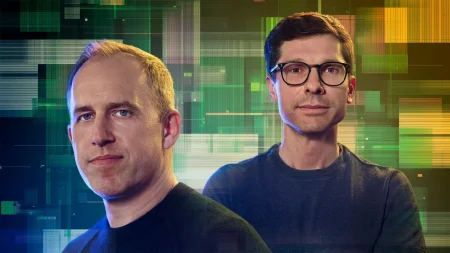The Murdaugh Murder Appeal: A Deep Dive into Digital Forensics and Alleged Procedural Bias
The legal saga surrounding Alex Murdaugh continues to unfold, with the focus shifting from the courtroom drama to the intricacies of smartphone evidence and the fairness of his original trial. A 132-page appeal filed by Murdaugh’s defense team challenges the double murder convictions, placing the spotlight squarely on the testimony of cellphone forensic expert Paul McManigal. The crux of the appeal revolves around McManigal’s analysis of phone light activity, a critical component of the prosecution’s timeline placing Murdaugh at the scene of the murders. This appeal raises fundamental questions about the interpretation of digital evidence and the potential for bias in high-profile trials.
The prosecution’s case hinges on a meticulously constructed narrative of Maggie Murdaugh’s final moments, built upon McManigal’s interpretation of the backlight activity on her phone. According to the prosecution, a sequence of events involving backlight activation, orientation change, and step count at 8:53:08 PM suggests deliberate interaction with Maggie’s phone after her death. This interaction, they argue, aligns with Alex Murdaugh’s movements and implies that he handled the phone after the murders. The timing of the backlight turning off, coinciding with Murdaugh’s SUV passing the location where the phone was later found, further strengthens the prosecution’s theory. They contend this points towards a hasty disposal of evidence, suggesting Murdaugh may have tossed the phone from his vehicle.
However, the defense challenges this interpretation, arguing that the phone activity could have been triggered by automated processes or even by Maggie herself in her final moments. The complexity lies in differentiating between human interaction and system-generated activity, a nuanced distinction that can be difficult to establish with absolute certainty. This ambiguity highlights the inherent challenges of relying on digital forensics as definitive proof. The defense asserts that the prosecution’s interpretation is speculative and lacks concrete evidence directly linking Murdaugh to the phone manipulation after the murders.
Digital forensic analysis relies on a combination of specialized tools, rigorous testing, and contextual information to decipher user behavior from digital artifacts. While data can reveal changes in phone orientation, screen activation, and proximity to other devices, interpreting this data requires careful consideration. Experts must determine whether an action was deliberate, incidental, or automated. This process is particularly crucial in cases like the Murdaugh trial, where physical witnesses and traditional forms of evidence are limited. The defense contends that McManigal’s analysis falls short of these standards, raising concerns about the reliability of his conclusions.
The defense’s appeal meticulously dissects McManigal’s methodology, questioning both its technical basis and interpretive framework. They argue that while the data may show phone activity, it does not definitively prove human interaction. This distinction is pivotal, as the state has used McManigal’s findings to suggest that Murdaugh’s handling of the phones contradicts his alibi. The defense challenges the scientific rigor of McManigal’s tests, citing a lack of proper documentation, absence of peer review, and the absence of standardized procedures. They argue that these shortcomings undermine the credibility of his testimony and cast doubt on the prosecution’s timeline.
McManigal’s analysis centered on reconstructing events based on backlight operation patterns and the correlation between phone movement and screen activation. He conducted tests on a similar iPhone model, attempting to replicate the conditions surrounding Maggie Murdaugh’s phone activity. However, the defense argues that these tests were conducted in an uncontrolled environment, lacking the necessary documentation and scientific rigor to support the conclusions drawn. The absence of detailed records regarding testing procedures, measurements, and environmental factors raises concerns about the reliability and replicability of McManigal’s findings. This meticulous scrutiny of the digital forensic evidence underscores the need for rigorous standards and transparent methodologies in forensic investigations.
Beyond the technical complexities of the phone evidence, the Murdaugh appeal also raises broader concerns about the fairness of the trial itself. The defense accuses court clerk Rebecca Hill of improperly influencing jurors, alleging procedural bias that could have tainted the verdict. These allegations, coupled with the questions surrounding the digital forensic evidence, paint a picture of a trial potentially marred by irregularities. As the South Carolina Supreme Court reviews the appeal, the Murdaugh case serves as a stark reminder of the importance of impartiality and adherence to due process in the pursuit of justice. The outcome of this appeal will undoubtedly have far-reaching implications for the use of digital forensics in future legal proceedings and will set a precedent for the standards of evidence required in such complex cases. Regardless of the appeal’s outcome, Alex Murdaugh will remain incarcerated for a considerable period due to prior convictions for extensive financial crimes, including embezzling millions of dollars from clients and his former law firm. The double murder trial and subsequent appeal, however, represent a critical juncture in the ongoing legal saga, raising profound questions about the role of technology, forensic science, and procedural fairness in the pursuit of justice.















